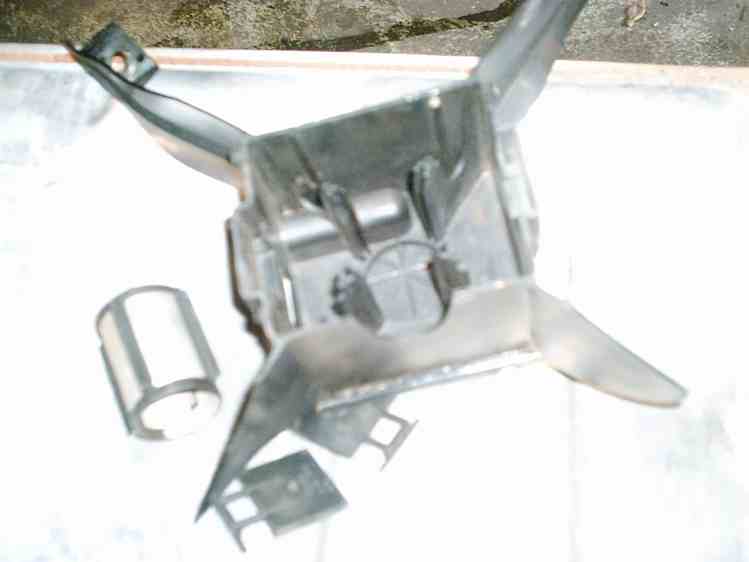<font face="Verdana, Arial" size="2">Internal tank parts are not available from VW; you'll either have to repair yours or scour a junkyard...</font>
Tom, I couldn't find that P/N either on my EPC5 list. The P/N for the entire tank is 170 201 075 J
Thanks for checking guys. It is really too bad, the factory surge tank is a neat design, and it works very well. When it was working, I could run the car until it sputtered, then add 2 full 5 gallon dump cans without spilling, to a 10 gallon tank. Whatever was left in the tank had to be less than what fits in the stock filler neck, probably less than a gallon. Too bad I have to scrap it for what should be a $3 part. If I could find one in a junk yard, it would be at least as old as the one I am replacing, and may have the same problem. No way to inspect it through the sender opening. The car isn't street legal, so I can't really test it without going to the track.
<font face="Verdana, Arial" size="2">We have bought used and brand new tanks before; not real expensive, and probably the better choice anyway.</font>
I did some digging on the cheap replacement tanks, and from what I can tell reviews are mixed. Some work fine, others the hoses don't quite match up, and I have no idea what they use to prevent sloshing under side load. They certainly don't use the same thing the stock tank does, or they couldn't sell it for what they do. A factory tank is out of my price range, and a used tank could have the same problem in a few months. Right turn fuel starvation isn't exactly an isolated problem.
My tank is at a radiator shop, and they are going to make me a brass surge box with a filter to replace the factory plastic one. I am already into them for an hour labor to boil it out and cut it open, having them fix it would end up costing me the same as buying an aftermarket tank at this point, plus I know the tank is in good shape, and all the hoses will fit. He is estimating that it will end up ~$250, which isn't bad considering S.F. Bay area labor rates. If the new surge box works even close to as well as the stock one, I will be happy.
If anyone is interested, this is what the stock innards look like:
The screen fits in the 4 rails sticking up from the bottom, the problematic diaphragm can be seen through the hole at the bottom. This picture the top is removed from the box. The 2 square things are little trap doors, that fit in the sides of the tank. They are hinged at the top, and keep the fuel in the surge pot under side loading. The notches at the right and left sides of the box are where the hinges fit, and they are held in place by the top of the housing. The white spot on the left side of the box is one of the holes for the doors.
The fuel flows in the little doors, through the filter and then down between the diaphragm and the housing. The pickup is on the bottom of the housing, is pulls the fuel up and then directs it to the left into the feed pipe for the fuel pump. You can see the back side of the pickup inside the box, running from the center top to the left corner. There is an "O" ring that keeps the pipe sealed to the housing.
If I can, I will post a picture of the new box.
Thanks again,
Tom




